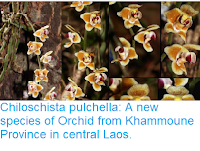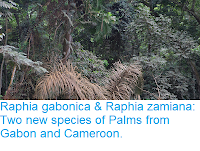Aloes, Aloe spp., are large, thorny succulent plants found in Africa, Arabia, and the islands of the western Indian Ocean, where they fill roughly the same ecological niche as Cacti. Aloes are Monocotyledons, with fleshy, blade-shaped leaves with thorns along their edged, arranged into spiral rosettes. Many Aloes are stemless shrubs, others have horizontal or upright stems, the later often being known as Tree Aloes.
In a paper published in the journal PhytoKeys on 8 February 2019, Mary Barkworth of the Biodiversity Museum at the University of Hargeisa, and the Biology Department at Utah State University, Ahmed Ibrahim Awale, also of the Biodiversity Museum at the University of Hargeisa, and of Candlelight for Environment, Education, and Health, and the College of Applied and Natural Science at the University of Hargeisa, and Faisal Jama Gelle, again of the Biodiversity Museum at the University of Hargeisa, describe a new species of Aloe from Somaliland.
Somaliland was a province of Somalia until 1991, when it unilaterally declared independence from Somalia at the outbreak of the Somalian Civil War. Few outside countries recognised this independence, but it did serve to protect Somaliland against much of the chaos that enveloped the rest of Somalia, and enabled, amongst other things, a degree of botanical exploration to go on in the area, with several new species of Aloe being described from the territory while war raged to the south.
The new species is named Aloe sanguinalis, meaning ‘blood’ in reference to the sap of the species, which is yellow when it emerges, then turns red, then dries to a deep red. It forms large clumps of plants, with leaves of a uniform green with red thorns, and produces widely spaced red flowers on tall flower spikes.
Somaliland was a province of Somalia until 1991, when it unilaterally declared independence from Somalia at the outbreak of the Somalian Civil War. Few outside countries recognised this independence, but it did serve to protect Somaliland against much of the chaos that enveloped the rest of Somalia, and enabled, amongst other things, a degree of botanical exploration to go on in the area, with several new species of Aloe being described from the territory while war raged to the south.
The new species is named Aloe sanguinalis, meaning ‘blood’ in reference to the sap of the species, which is yellow when it emerges, then turns red, then dries to a deep red. It forms large clumps of plants, with leaves of a uniform green with red thorns, and produces widely spaced red flowers on tall flower spikes.
Aloe sanguinalis at Alala Adka showing the largest clump in October 2016. Barkworth et al. (2019).
Aloe sanguinalis was found growing at two separate locations, alongside a road near Alala Adka in the Marodi Jeh Region, and alongside the road to Hiin-Weyne village, near Lafarug in the Sarhil Region. The species forms notably large clumps, with the largest encountered being about forty metres by ten, and containing about 2500 individual stems; it what not clear to what extent these represented individual plants rather than offshoots of established plants. Despite the apparent lack of predators the species is not without threats, with the increasing frequency of drought in the region being of particular concern; no immature plants were observed in the field, which may indicate that new plants were not being established.
Aloe sanguinalis appears to have few natural enemies; the areas where it was growing were heavily grazed by Goats and Cattle, both of which ignored the Aloe, despite other plants in the area apparently being overgrazed. The Catholic missionary Evangelist de Larajasse, who was based in Berbera between 1888 and 1893, reported seeing a species of red Aloe that was fed upon by Elephants, which may have referred to Aloe sanguinalis, but Elephants have not been seen in Somaliland since 1958, so these are not an obvious threat. Some marks were found on the leaves which may have come from piercing Insects, though this damage was limited.
Ahmed Ibrahim Awale with a clump of Aloe sanguinalis at Lafarug in January 2018. Barkworth et al. (2019).
Aloe sanguinalis was found growing at two separate locations, alongside a road near Alala Adka in the Marodi Jeh Region, and alongside the road to Hiin-Weyne village, near Lafarug in the Sarhil Region. The species forms notably large clumps, with the largest encountered being about forty metres by ten, and containing about 2500 individual stems; it what not clear to what extent these represented individual plants rather than offshoots of established plants. Despite the apparent lack of predators the species is not without threats, with the increasing frequency of drought in the region being of particular concern; no immature plants were observed in the field, which may indicate that new plants were not being established.
Inflorescence of Aloe sanguinalis at Lafarug, June 2018. Barkworth et al. (2019).
See also...
Follow Sciency Thoughts on Facebook.









